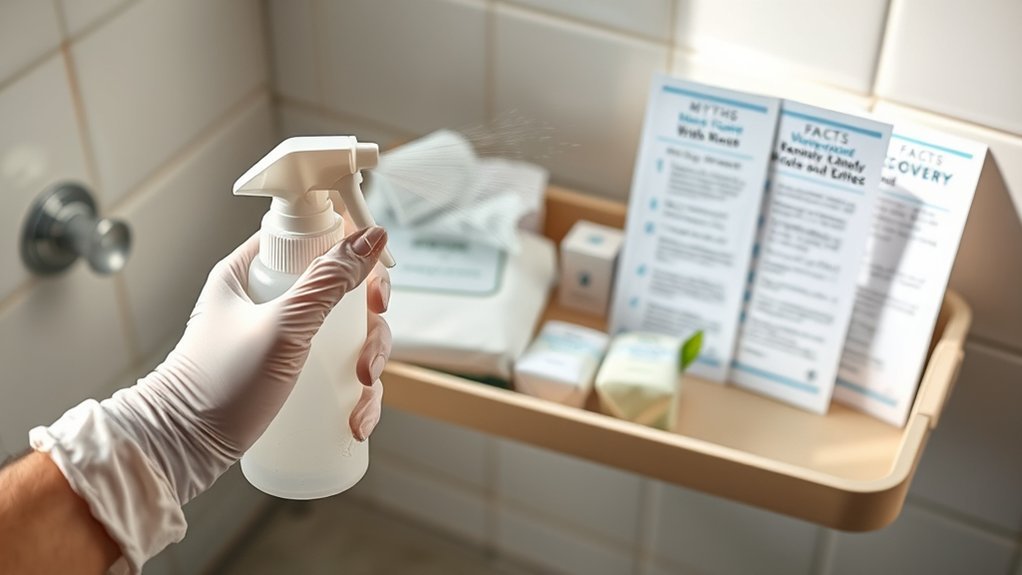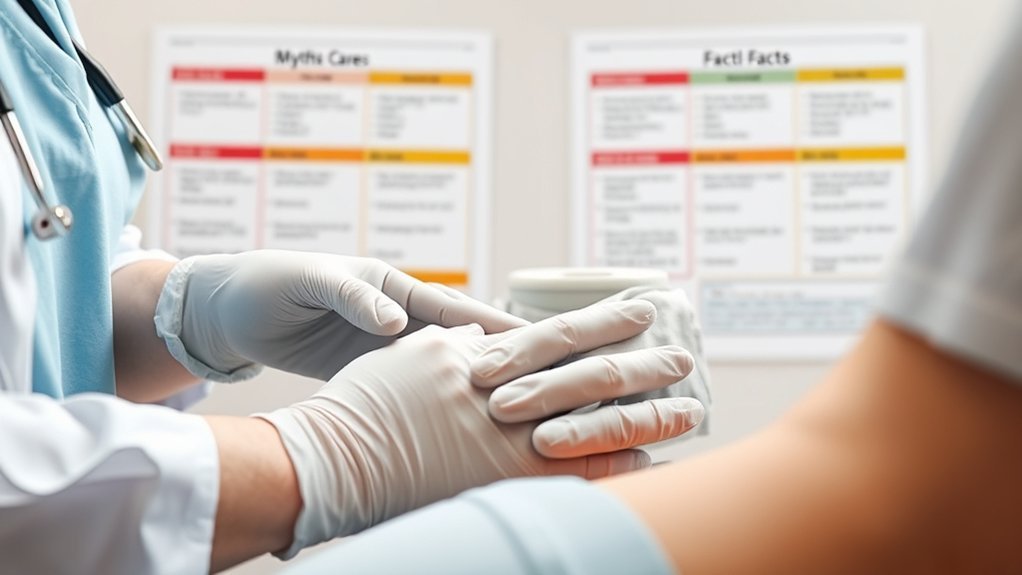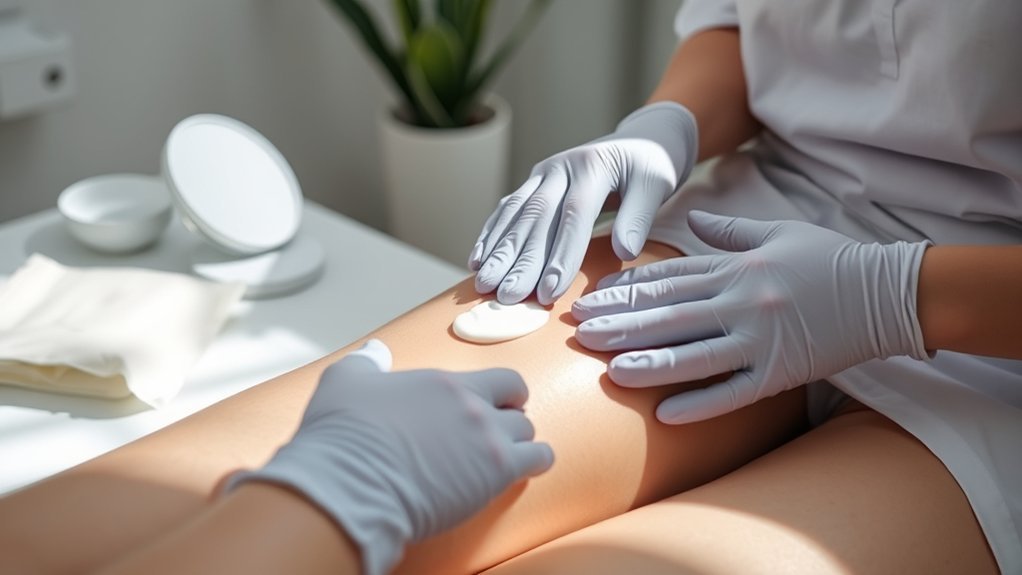Is it true that all first-time mothers will face severe tearing during childbirth? This common belief can cause unnecessary anxiety and fear. Understanding the realities of perineal care is essential, as there are effective strategies to reduce tearing. From exploring the benefits of perineal massage to addressing misconceptions about healing, there’s much to uncover. Let’s clarify these myths and empower your approach to perineal health.
Understanding Perineal Tears
Understanding perineal tears is essential for new mothers, especially since these injuries can occur during childbirth when the baby’s head is larger than the birth canal.
Perineal tears can range from minor, affecting only the skin, to severe, involving deeper muscle layers. The severity directly impacts recovery time; most women heal within days to weeks after vaginal delivery.
Perineal tears vary in severity, influencing recovery time; most women heal within days to weeks post-delivery.
Not every first-time mother will experience tearing, as factors like baby size and pushing techniques play a significant role. To reduce the likelihood of perineal tears, consider practicing perineal massage starting at 34 weeks of pregnancy, though it doesn’t guarantee prevention.
While minor tears generally heal well, severe ones may necessitate surgical intervention and can affect long-term pelvic health.
Common Myths About Tearing During Childbirth
While many expectant mothers worry about the possibility of tearing during childbirth, several myths can cloud their understanding of this common experience.
Here are some key facts to take into account:
- Not all first-time mothers experience tearing; controlled pushing and ideal labor positions can greatly reduce the risk.
- While perineal massage may lower the likelihood of severe tears, it doesn’t guarantee that tearing won’t occur.
- Most minor tears heal within days, and deeper tears may need medical diagnosis and treatment but don’t permanently alter your appearance.
- Understanding these myths about vaginal health can empower you to focus on perineal health and recovery, helping to alleviate unnecessary fears surrounding childbirth. Infant Care & Health highlights the unique health needs of mothers during this critical time.
The Role of Perineal Massage
Perineal massage plays a significant role in preparing for childbirth, as it can enhance the elasticity of the perineal tissues and potentially reduce the risk of tearing.
Starting from 34 weeks of pregnancy, practicing this technique regularly may improve perineal health, promoting overall well-being. Evidence suggests that it can lower the need for sutures in women who experience vaginal tearing during delivery, although it doesn’t guarantee prevention.
Involving your partner in perineal massage can foster emotional support and bonding during the third trimester. Using pregnancy-safe oils, like Bump Gloss, guarantees comfort while practicing this low-risk technique.
Always consult your healthcare provider for guidance on proper techniques to maximize benefits and assure a safe experience for your reproductive health.
Healing and Recovery From Perineal Tears

When you experience a perineal tear, the severity of the tear will greatly impact your healing time and recovery process.
Minor tears may heal quickly, but more severe injuries can require surgical intervention and longer care.
Understanding effective pain management strategies is crucial to support your healing journey and guarantee ideal recovery.
Tear Severity Impact
Tear severity plays a crucial role in the healing and recovery process following childbirth. Understanding the implications of different tear severities can enhance your perineal health:
- Minor tears typically heal within days to weeks, requiring minimal care.
- Severe tears may necessitate surgical intervention and a longer recovery, potentially leading to complications like anal incontinence and chronic pain.
- Preventive strategies, such as warm compresses and perineal massage during labor, can greatly reduce the risk of severe tearing.
Recognizing the importance of tear severity not only aids in effective recovery but also helps you address potential long-term issues that could impact your quality of life.
Prioritizing perineal care is essential for a smoother recovery journey.
Healing Timeframes Explained
Understanding healing timeframes is essential for managing recovery after childbirth. Most perineal tears heal within days to weeks, depending on their severity. Superficial tears, limited to the skin, typically heal faster than deeper muscle tears, which may require more intensive care and time.
| Tear Severity | Healing Timeframe | Notes |
|---|---|---|
| Superficial Tears | 1-2 weeks | Quick recovery with proper care |
| Moderate Tears | 2-4 weeks | May require additional support |
| Severe Cases | 6+ weeks | Often need surgical intervention |
Proper care, including sitz baths and pain relief, can enhance perineal health and expedite recovery for minor tears. Severe cases, however, can greatly extend healing timeframes.
Pain Management Strategies
Effective pain management is essential for a smooth recovery from perineal tears, as it can greatly enhance your comfort and healing process. Here are some effective strategies to contemplate:
- Over-the-Counter Medications: Use ibuprofen or acetaminophen to alleviate discomfort during your recovery.
- Sitz Baths: Soak the perineal area in warm water to reduce pain and inflammation, promoting overall perineal health.
- Cold Packs: Apply ice to the perineum in the first few days post-delivery to minimize swelling and numb pain for immediate relief.
Incorporating these methods can markedly improve your recovery experience, allowing you to focus on healing and adjusting to new parenthood.
Always consult your healthcare provider for personalized recommendations.
The Impact of Tears on Appearance and Sensation
While experiencing perineal tears can be concerning, it’s important to know that they often lead to temporary changes in the appearance and sensation of the vaginal area.
Most women find that minor tears heal within days to weeks, while severe tears may require surgical intervention.
However, with appropriate postpartum care, including sitz baths and over-the-counter pain relief, recovery is generally effective, leading to restoration of both function and appearance.
Many women report that any changes in sensation after healing are minimal and don’t negatively impact sexual satisfaction.
For those seeking to address lasting changes following severe tearing, options like vaginal rejuvenation are available, underscoring that recovery is individualized and can encompass various treatment approaches.
Misconceptions Around the “Husband Stitch”
Many new mothers encounter the term “husband stitch,” which refers to the controversial practice of adding extra stitches after vaginal delivery in hopes of enhancing sexual pleasure.
However, this practice is outdated and unsupported by medical evidence. Here are key points to take into account:
- Many healthcare professionals discourage the husband stitch due to its potential to cause pain during intercourse.
- Research indicates that these extra stitches often lead to complications, such as discomfort and dissatisfaction, rather than improving sexual health.
- Informed consent is essential, as many women may not understand the implications or the lack of medical backing for this practice.
Instead of the husband stitch, proper recovery options and consultations about vaginal rejuvenation are more effective for your sexual health post-delivery.
Importance of Proper Education and Terminology in Perineal Care

Proper education and clear terminology in perineal care are essential for enhancing women’s health outcomes and fostering informed decision-making.
Understanding the distinctions between the vulva and vagina is critical for effective communication with healthcare providers, especially when discussing issues like vaginal odor or genital symptoms. Yet, less than 50% of women receive guidance on feminine hygiene, highlighting a significant gap in education.
Understanding the differences between the vulva and vagina is vital for effective communication about women’s health issues.
By promoting accurate terminology, you empower yourself to advocate for your perineal health and make informed choices about self-care.
Additionally, recognizing the diversity of female genitalia can improve body image and reduce dissatisfaction. Awareness of societal impacts on self-image is important for providers to support your overall perineal and reproductive health effectively. Furthermore, access to personalized care plans can ensure that you receive appropriate screenings and education tailored to your unique needs.
Frequently Asked Questions
What’s True About Perineal Care?
Perineal care is essential for healing and comfort post-birth. Utilizing techniques like perineal massage can reduce tearing risk, while proper hygiene and care promote healing. Always consult your healthcare provider for tailored recovery advice.
Does the Perineum Always Tear During Childbirth?
No, the perineum doesn’t always tear during childbirth. Many women give birth without tears, especially with proper techniques and positions. Factors like birth weight and pushing duration can influence the likelihood of tearing.
Should the Female Perineum Be Clean?
Yes, the female perineum should be clean. Regular washing with warm water suffices for hygiene, avoiding harsh soaps or douches that disrupt natural balance. Trust your body’s self-cleaning abilities to maintain health and comfort.
Does Perineal Care Help Prevent Infections?
Yes, perineal care greatly helps prevent infections. Studies show that up to 36.7% of women experience anal incontinence after severe tears, emphasizing the importance of maintaining hygiene and proper care during and after childbirth.
Conclusion
In summary, understanding the facts about perineal care can empower you during childbirth and recovery. Instead of succumbing to myths that foster fear, consider the evidence supporting practices like perineal massage and controlled pushing. Remember, knowledge is your greatest ally—just as you wouldn’t navigate a stormy sea without a compass, don’t set out on your birthing journey without the right information. Embrace your experience with confidence, knowing you have the tools to support your perineal health.
